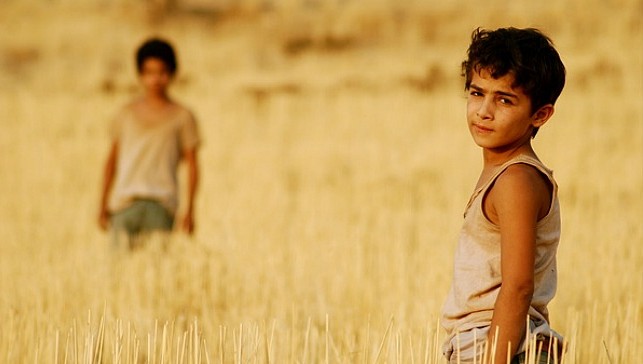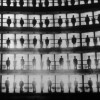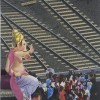“What is happening? Why the road is closed?”
“I think people from Kurdia are demonstrating.”
I remembered that short dialogue my aunt had with a taxi driver in Athens, when I was on my way to meet Memed Aksoy.
Memed is a young filmmaker and member of the management committee of the forthcoming 8th London Kurdish Film Festival, and has lived his whole life in London. If there are people who ignore even the proper name of Kurdistan then what are the chances for many of us to have seen a Kurdish film?
The Kurdish nation was divided “on a table using a ruler,” Memed told me, being the largest nation in the world without a recognised homeland. Scattered in Turkey, Syria, Iraq, and Iran, Kurds have traditionally experienced oppression and a violent ‘divorce’ from their language, history and culture which were widely declared as illegal and banned.
Kurdish identity was mainly conveyed through oral tradition thanks to women who escaped assimilation by not attending the school and thus became the “carriers of fables and myths to the next generations”. Nowadays, the picture is changing: “Kurdish cinema is taking a front seat,” being internationally laureled and shedding light on this ‘invisible’ nation.
100 Years of Silence
“Imagine that cinema is now 120 years old and Kurds have been making films for the past 20 years, so, we are 100 years behind. Zare (1927) was the first film in Kurdish history, made by the Soviets in Armenia,” according to Memed’s words.
After this film, Kurdish cinema remained silent for several decades.
“In the 1990s, Kurds started making films on a wider scale. In the last few years that has hit the roof. This year we received over 300 film submissions including features, documentaries and shorts. The production level is actually better than most European countries.”
The main factor is political. After the Kurdish country was divided into four, the Kurds couldn’t determine their own future, nor even their day to day life.
The decades of struggle and the autonomy gained in South Kurdistan (Iraq) in 2003 has created huge opportunities for the production, distribution and exhibition of Kurdish films. They are now recognised because Kurds finally gained a political status and government.
After the 1970s, there was a mass uprising in Turkey and the Kurdish freedom movement created areas where Kurds could actually start to unearth, and write, their history and culture. A significant part of this was done in the diaspora
The Kurds started to believe in themselves and felt the need to communicate their stories. This is also happening in East Kurdistan (Iran) and West Kurdistan ( Syria) as the Kurds continue to struggle for self-determination.
“Being able to tell your stories is a way to feel that you are a person of the world,” Memed explained.
The ‘evil’ Kurd
“You might have seen movies from Kurdish directors but you just don’t know it”, Memed told me. Anyone or anything identified as ‘Kurdish’ was exiled or veiled under a different name.
“Many Kurds have been making art for the nation of the state they have been living in, such as Yilmaz Güney, the greatest star in Turkish history, who was recognised around the world as being Turkish. The artistic history was appropriated by the oppressing states so now we are reclaiming the individuals and the work that they did. Claim it back or at least share it.”
“When in 2001, Guney’s films were officially shown for the first time, the word ‘Kurdistan’ and the Kurdish language had been taken out of the films and in some places the Kurdish music has been changed. Censorship took on a different face. In Turkish TV, Kurdish characters are mostly negative characters, usually depicted as uncivilised or terrorists. There is this kind of stereotype which is still very prevalent,” said Memed.
A Crossroad of Memories and Resistance
The newborn Kurdish cinema is the vehicle for people to share their untold stories, alleviate their traumas and discover their own identities.
“It’s difficult to define your cinema when you don’t have a unified state but we see that as a strength; as a cultural richness that we can develop further, synthesise it and bring out something unique,” Memed explained with enthusiasm.
“Kurdish from different parts of Kurdistan don’t know each other’s experiences, so cinema for the Kurds is about getting to know themselves and for the world to get to know them. We have a very limited production of photography, novels, poetry. Thus, cinema plays the role of a memory bank and is another area of resistance for us. A resistance against assimilation and against the attack to the Kurdish history and identity. Good cinema can make you more beautiful and in that way it is the greatest weapon of resistance, like any art form. Until now the Kurds have been trying to do that through political resistance but that’s what divorced them from artistic and cultural resistance.”
“I remember, at the end of the film The Children of the Diyarbakir, screened in one of our previous festivals, people were crying. Some of them have never heard of the Kurds, apart from maybe the Kurdish shopkeeper on their local street. A story has more relevance than someone getting up and talking for an hour about how much we had suffered. After that film, those people will never forget that the Kurdish people exist and they are waging a struggle for recognition.”
The 8th London Kurdish Film Festival will take place from the 15th until the 24th of November at Hackney Picturehouse (15-22/11) and Westbourne studios (23-24/11), introducing to the international audience a record number of 121 films including feature films, shorts and documentaries.







